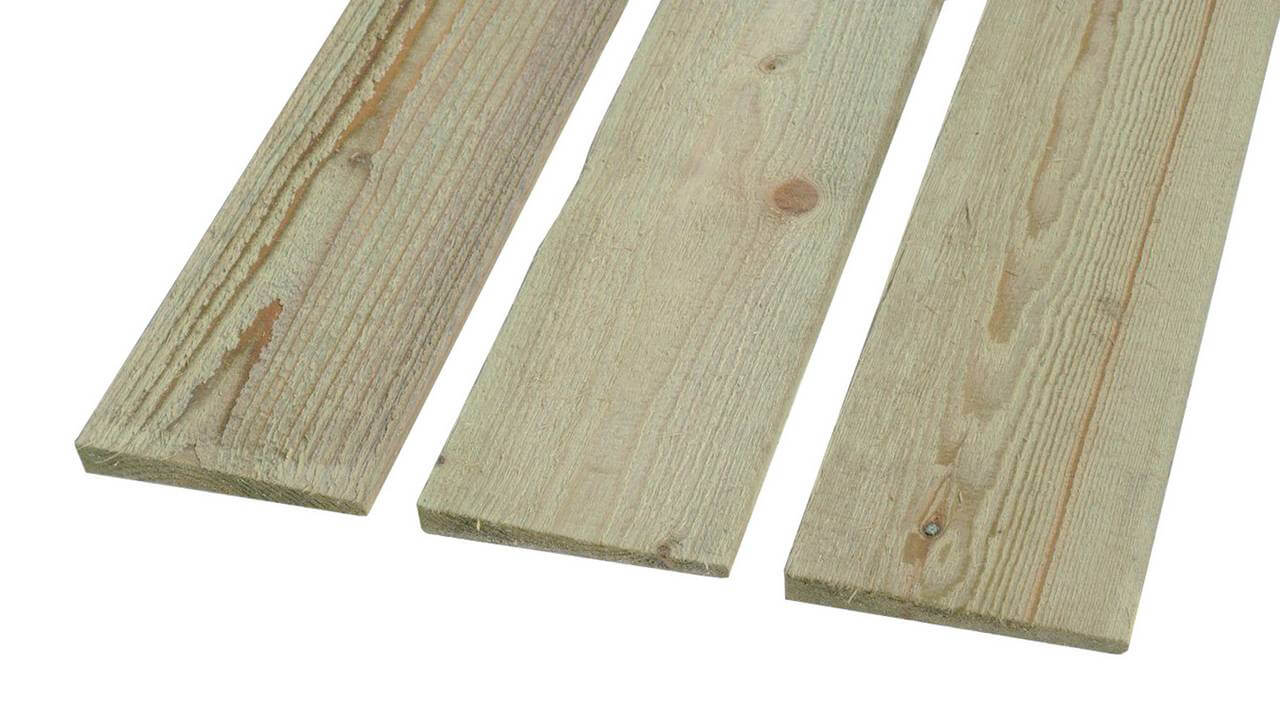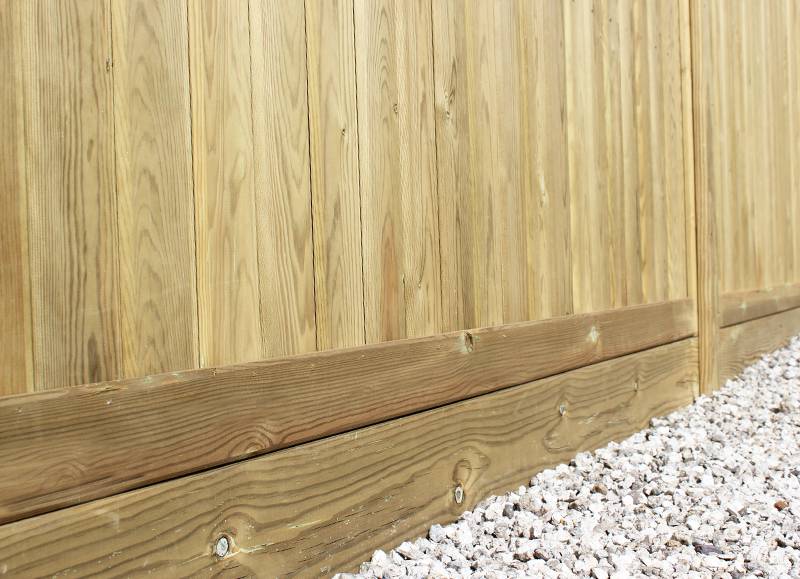Our other sites:
Wooden fence boards
Fence boards
Vacuum pressure treated wooden fence boards in kit form or panel options. Individual timber boards 100mm width most used to create Featherboard or Closeboard fencing. All our timber is guaranteed for 25 years and made for longevity.
Read moreHow many fence boards per metre ?
Each fence boards is 100mm, but each board should over lap the last by 20mm. It works out about 12 boards per metre. Bays (gap between each post) should be 2.4m which will require 29 pales.
How to install fence boards?
Depending on the overall height of the featherboard fence will depend on how many rails are used. Rails are fixed to posts. Fence boards are then fixed to the rails. Fence boards should overlap each other by 20mm. For full instructions read our installation instructions.
What nails to use for fence boards?
You will need 50mm nails for attached fence boards to rails. Always opt for stainless steel or galvanised to ensure longevity. To find out more read our blog – what type of nails do I need for my fence
Key Considerations When Choosing Fence Boards
When selecting fencing for your project, it’s essential to consider all aspects of the timber, including its depth, height, and width. The thickness of the wood plays a crucial role in the durability and longevity of both the fence and gravel boards. To help guide you in making the right choice, we’ve put together a short 6-step guide on what makes a high-quality fence.
Thicker pales provide significantly more strength compared to cheaper, thinner alternatives. Budget fencing often uses pales as thin as 10mm, a cost-saving measure in manufacturing that compromises durability. In contrast, thicker pales enhance structural integrity, ensuring your fence withstands harsh weather conditions for years to come. It’s easy to imagine which type of pale will hold up better after just one winter. This is a topic we explore in greater detail across our site. Additionally, when evaluating fence boards, don’t just focus on the thicker 15mm edge;consider the thinner side as well. In some cases, the tapered end of a pale can be as thin as 4mm, drastically reducing its strength by up to 50%. Weak points like these make the fence more susceptible to damage, especially if the timber has existing flaws.
By carefully assessing the quality of your fence boards, you can ensure a long-lasting, reliable fencing solution that won’t need replacing prematurely.
What is Pressure-Treated Timber and Why is it Important?
Pressure treatment is a process where preservative chemicals are forced deep into the wood, enhancing its durability and resistance to rot, decay, and insect damage. This method significantly extends the lifespan of timber, making it ideal for outdoor use.
Timber used in fencing, landscaping, or any application where it is exposed to moisture, soil, or the elements must undergo preservation treatment to ensure long-term protection. Without proper treatment, wood can quickly deteriorate when exposed to outdoor conditions.
Many manufacturers receive timber from sawmills with a high moisture content—often exceeding 100%. If left untreated, this timber becomes highly susceptible to rot and decay. At Jacksons Fencing, we kiln-dry our timber to reduce its moisture content to below 28%, ensuring it is optimally prepared for pressure treatment. This process improves absorption of the preservative and enhances the timber’s longevity.
Fence Boards: Commonly Asked Questions Answered
We answer commonly asked question about fence boards, so you can better understand what to look for and which boards are best.
BlogTop




